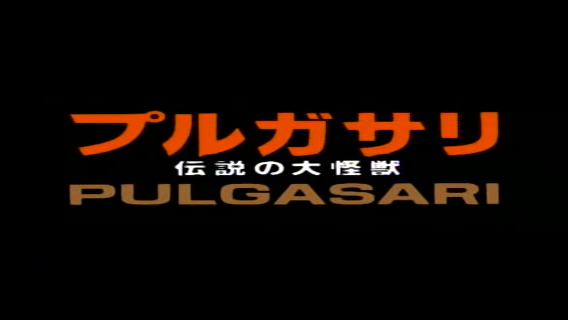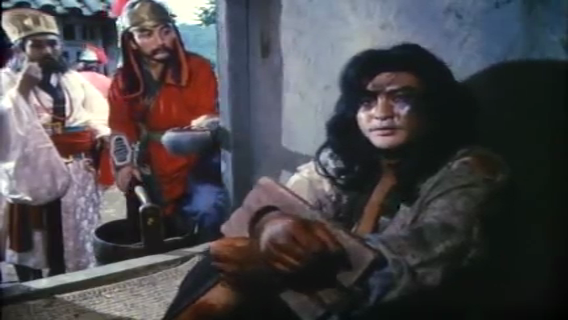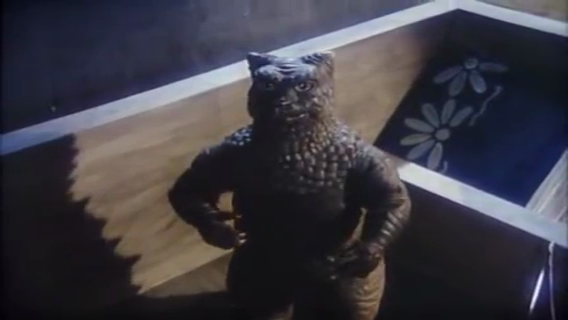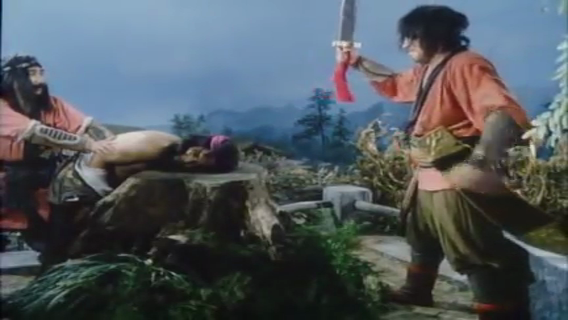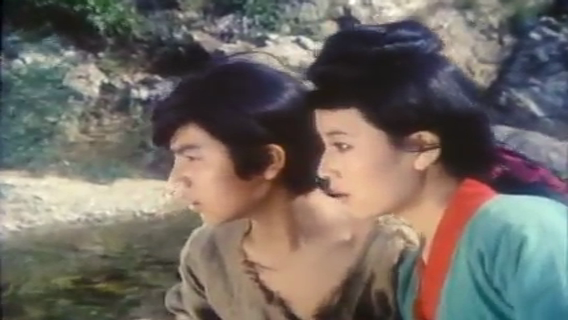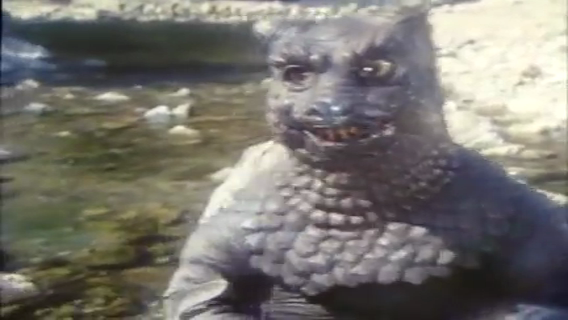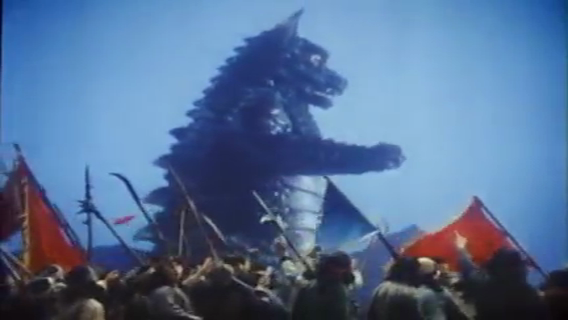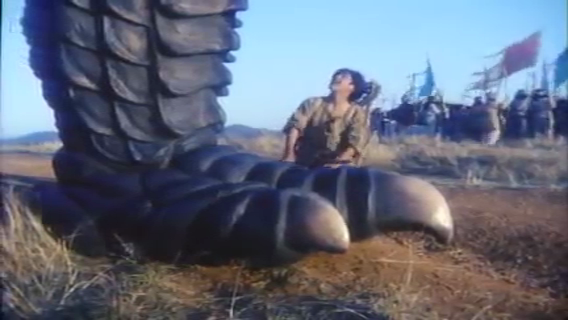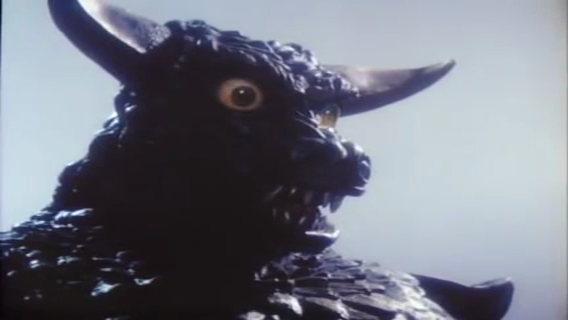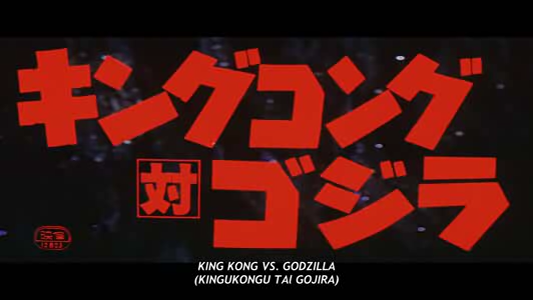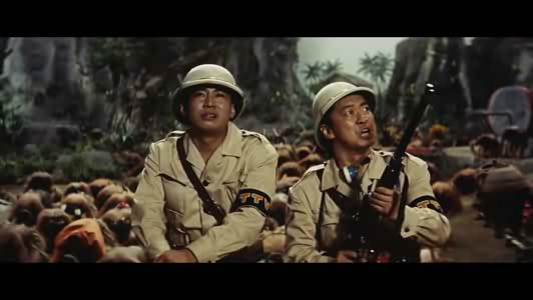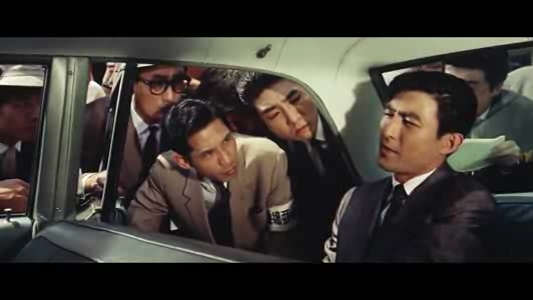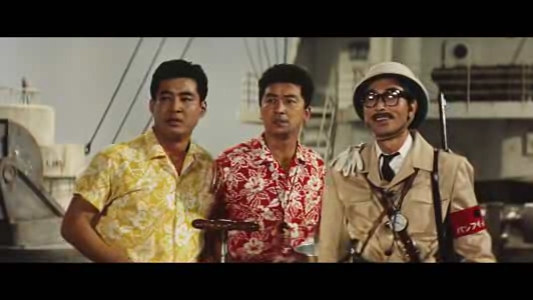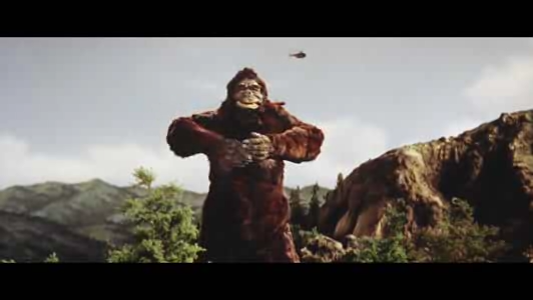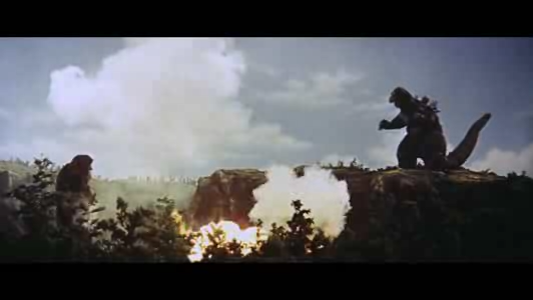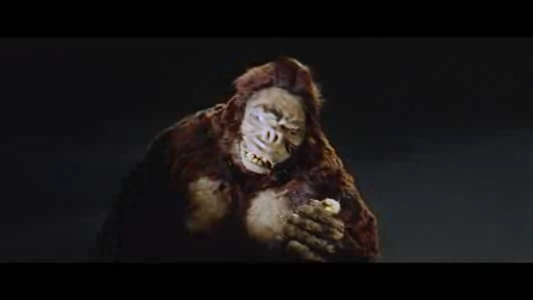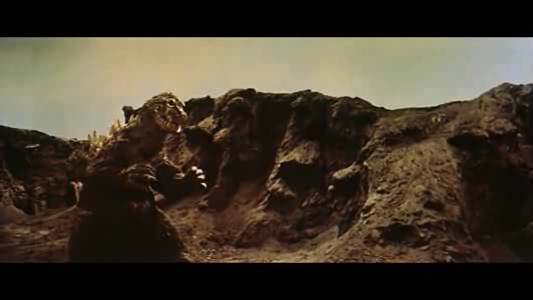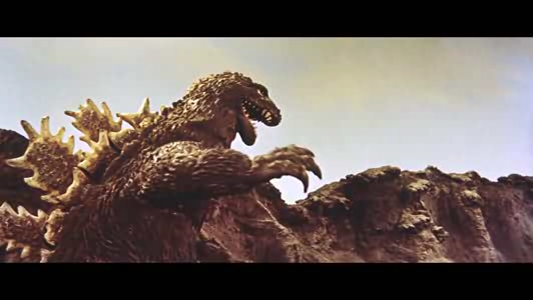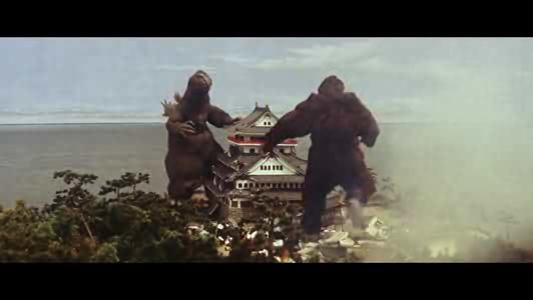-
#366 – Pulgasari (1985)
Pulgasari (1985)
Film review #366
Director: Shin-Sang-Ok
SYNOPSIS: A small village is by invaders who try to force the blacksmith to make weapons for them. When he refuses, he is sent to prison without food until he changes his mind. In his dying moments, he creates a small figure that he vows will destroy the invaders. When the figure comes alive in front of Ami, the blacksmith’s daughter, she realises the creature grows bigger with the more iron it eats, and the villagers begin feeding the creature their iron in order to fight the imperial invaders…
THOUGHTS/ANALYSIS: Pulgasari is a 1985 monster film and the first film I have reviewed from North Korea. The story behind the film is just as interesting as the film itself. The director, Shin Sang-ok, was kidnapped with his wife by North Korea for the intention of producing films such as Pulgasari for the government. Kim Jong-il, the leader of North Korea, was apparently a huge fan of the Godzilla films, and wanted to create his own version, thus why he is listed as the executive producer on this film. For around ten years Shin Sang-ok and his wife (an actress in her own right) were forced to make films for the government before eventually escaping when they were visiting a film festival in Austria and fleeing their North Korean minders. Pulgasari was the last film he directed before he made this escape.This whole story would probably make an interesting film in and of itself…
With regards to Pulgasari itself, the film opens up in a remote village in the past. A young man named Inde wants to leave the village to join a group of rebels/bandits living in the mountains, but Ami, a woman in the village who he is due to wed, does not want him to go. This drama is interrupted as an army enters the town to commission the blacksmith, Ami’s Father, to create weapons for their army. They take all of the iron items from the villagers to use in creating these weapons, which leads the blacksmith to refuse to help them. They respond by locking him up without food until he changes his mind. Just before he dies of starvation, the blacksmith creates a small figurine of the mythical monster Pulgasari which he puts his soul into, with the aim of protecting the village. When Ami gets the figure, she accidentally drips some of her blood onto it and causes it to come alive and start eating anything made of iron. As Pulgasari grows with everything he eats, the villagers and the rebels in the mountains rally behind the indestructible Pulgasari to drive away the invaders. The story as a whole is fairly simple, with a number of battles between the villagers and the imperial army, with a number of schemes by the King to stop Pulgasari as he relentlessly advances towards him. I suppose it doesn’t need to be much more complicated than a giant monster smashing stuff, and in that respect the film does its job fairly well. Some of the scenes centred around the other characters can dragon a little too long, and there are large gaps in between when Pulgasari makes an appearance which become rather dull. Nevertheless, Ami is a decent (and rare) female lead, and the setting is fairly well established.
The film is set in the past, and feels like it relies a lot on the history of Korea during that era. The villains are clearly meant to be Japanese, which is a typical portrayal of the country given it’s past in occupying Korea, and North Korea’s particular resentment of them. As you might expect, the film not so subtly fulfils the propaganda of the North Korean narrative, with the common workers banding together to overthrow the invading, imperial rule. In the end, Pulgasari becomes too big and continues to eat all the iron even after the invaders are gone. This leads to Ami sacrificing herself to stop Pulgasari. This is perhaps a reference to the revolution in North Korea leading to the creation of a monster that will bring about their destruction was a slight dig by the captive director at the regime that was holding him hostage, but it’s difficult to say for sure.
I was expecting a rather barebones film out of North Korea, and it more or less met those expectations. The production values and special effects aren’t much improved on the Godzilla films made thirty years prior. Nevertheless, just as those films still hold up well, some of the scenes in this film look fairly decent, particularly watching Pulgasari destroying buildings. The battle scenes as well feature a host of extras to give the feel of armies clashing. Some of the effects though, are pretty bad, such as when Pulgasari is small, you can clearly tell it is a hand puppet. The body suit of Pulgasari is again pretty decent, and has some moving parts and facial animations to make it more convincing. The soundtrack consists of a single synthesiser being played in more dramatic scenes, and is barely worth mentioning, but overall the film ended up being more well made than I was expecting. Pulgasari doesn’t offer anything new or exciting to the genre, and it loses some of it’s significance outside of it’s home country, but it is a rare and interesting example of cinema from a place you wouldn’t normally see.
-
#338 – King Kong vs Godzilla (1962)
King Kong vs Godzilla (1962)
Film review #338
dir. Ishirō Honda
SYNOPSIS: Pacific Pharmaceuticals are having trouble coming up with some successful advertising. Mr. Tako, the head of the company, is told about a monster that exists on a remote island, and sends Sakurai and Kinsaburo, two of his employees, to capture it so he can use it as the new mascot for the company. However, another monster appears: Godzilla is back and goes on the rampage, and a plan is devised to bring Godzilla and this new monster, King Kong, together in the hopes they destroy each other before they destroy everything else…
THOUGHTS/ANALYSIS: King Kong vs Godzilla is a 1962 monster film and the third film in the Godzilla series. Given that King Kong is a Hollywood character, and Godzilla a product of Japanese cinema, this film is a true crossover of east vs west. The film starts off showing the failed marketing of Pacific Pharmaceuticals, and their boss Mr. Tako tearing his hair out trying to get attention for the company. A doctor tells Mr. Tako about a remote island in the South, where an indigenous tribe worships some kind of monster. Mr. Tako somehow concludes that getting this monster to advertise his products as a mascot would lead to the company dominating TV ratings, and so sends to marketers Sakurai and Kinsaburo to the island in order to capture the monster and bring it back to Japan. This monster turns out of course, to be King Kong, and the opening act of the film focuses on his origin story. It’s pretty similar to earlier incarnations in that King Kong is worshipped as a God by an indigenous tribe, who make various offerings to him. The film slowly builds up to his appearance then engages in a fight scene with a giant octopus (really just a regular-sized octopus on a model set), which establishes King Kong’s strength and showcases his power before the inevitable meeting with Godzilla. It doesn’t add much to the character of King Kong, but it doesn’t need to: some characters just don’t need to be more complex or have a motivation to smash stuff.
When King Kong is sedated and on the way back to Japan, Godzilla awakens from being trapped in ice, and heads off on the rampage. The Japanese Self Defense Force tries a number of operations to try and stop it, but all of them fail. The only option left to them is to get King Kong and Godzilla to meet and destroy each other. It should be noted that the whole tone of this film is a lot lighter than the previous two Godzilla films. The story being based around using these monsters in a war for TV ratings shifts the focus from the horrors of the destruction to more of a satirical look at human’s and corporation’s response to tragedy to use it to maximise attention and ratings. This ultimately makes the film a bit more goofy and silly than the original two films, which were very dark, and had powerful messages about Japan’s relationship to destruction and nuclear technology in the aftermath of the Hiroshima bomb. It’s not a bad move that the film takes, it’s just something different, and it is the direction the film series takes after this one to appeal more to younger viewers. Again, we get the basic plot points of King Kong condensed into this film, with him being captured, breaking loose, and going on a rampage in a city, while kidnapping a woman and climbing a tall building. The people that made this film clearly wanted to tell King Kong’s story in full, but also in their own way, making him feel almost at home in the setting of Japan, by which I mean trashing their cities…
When we eventually see King Kong and Godzila face off, Godzilla manages to overcome King Kong easily thanks to his atomic breath meaning King Kong cannot even get close. In their second meeting, King Kong fares better thanks to having absorbed electricity form power lines and an oncoming lightning storm: it is hinted that King Kong has the ability to summon storms and has an affinity with lightning, but it’s not explained very well. So while King Kong eventually emerges the winner in the end, Godzilla gets a victory as well, so it should satisfy both fans. Apparently King Kong was even more popular than Godzilla in Japan at the time, so having him win at the end obviously satisfies more people. The monsters are played as in previous Godzilla films by men in suits rampaging over model sets. The suits look decent, and the fighting is carefully choreographed, but does get a little silly at points, such as when they’re throwing rocks at each other. Some of the plans to deal with Godzilla are very cartoon-ish too, such as literally digging a pit and covering it up, so that Godzilla will fall down into it. Also airlifting King Kong by tying balloons to him looks pretty silly.
This is the first time we have seen Godzilla and King Kong in colour, since their previous films were in black and white too, and the addition of colour definitely makes them look less threatening anyway. One thing that stands out is Godzilla’s big eyes that are almost cartoon-like, whereas King Kong looks extremely messy and primal, which sets up a good contrast between the two. The effects are pretty decent, but there’s not as much destruction as the previous films, probably because over half the film’s budget went to securing the rights to use King Kong in the film. Overall though, while it is a little different in tone to previous Godzilla films, it changes things enough to keep it fresh, and is structured well to tell the story of two monsters alongside giving ample screen-time to both. Some people may not like the goofy human stuff, but all in all it’s a decent offering.
